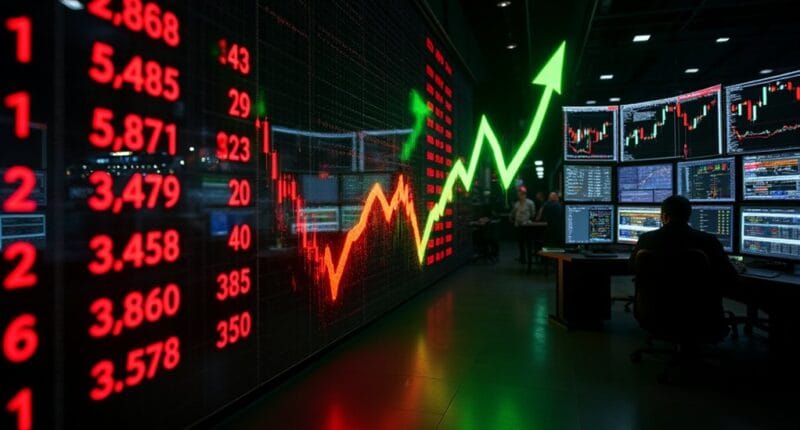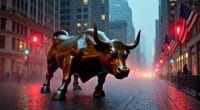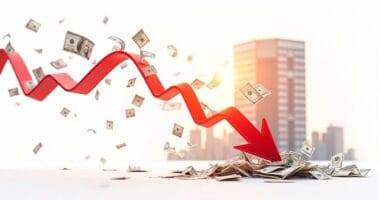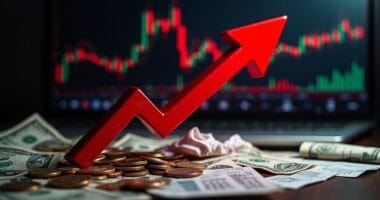Market chaos creates the perfect storm for massive rallies. When investors panic and dump stocks, prices plunge below reasonable values. The 2025 crash wiped out $6.6 trillion in just two days – talk about oversold! This forced capitulation drives weak hands out of the market while resetting valuations to attractive levels. Historical data shows these chaotic periods typically end with explosive upside moves. The pattern keeps repeating, like clockwork. There’s always more to this fascinating cycle.
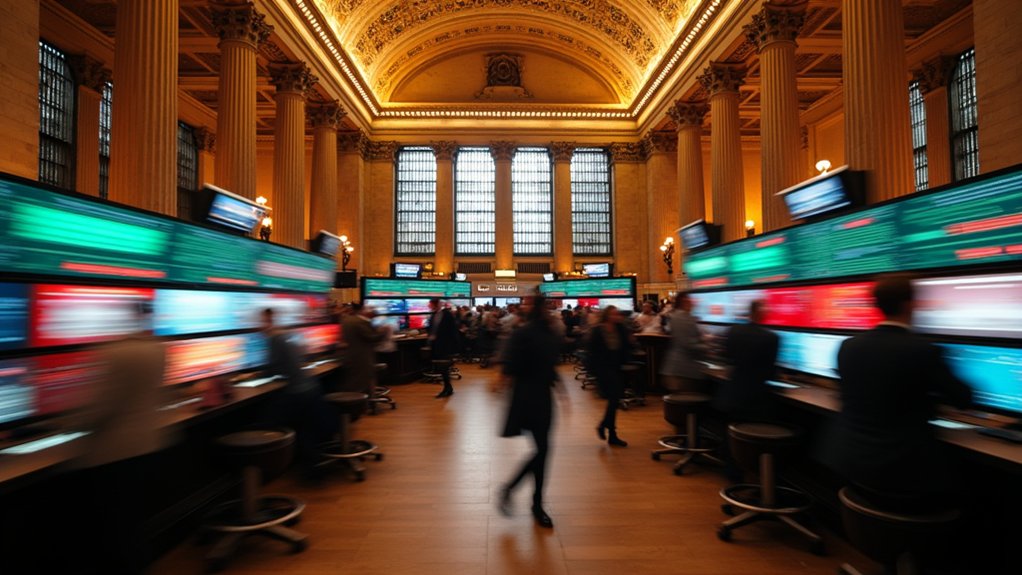
While financial markets typically follow somewhat predictable patterns, periods of market chaos throw those patterns right out the window. Just look at the 2025 crash – a jaw-dropping $6.6 trillion in global market value vanished in just two days. That’s what real chaos looks like. The VIX, Wall Street’s famous “fear gauge,” shot up to 45.31 points, while investors watched helplessly as their carefully constructed correlation models imploded. Safe-haven assets provide crucial protection during these volatile periods.
But here’s the thing about market chaos – it has an odd way of setting the stage for spectacular comebacks. During the Tech Bubble, amid a crushing 49% decline, the market managed to produce seven rallies averaging 14% each. The Dow later surged 2,900 points in a historic rebound. It’s like the market has a twisted sense of humor. When things look absolutely terrible, with the Dow Jones hemorrhaging 1,500 points day after day, that’s often when the biggest opportunities are forming. The market’s persistent disregard for the Fed’s guidance shows how traders are focusing on momentum driving behavior instead of traditional indicators.
The psychology behind these reversals is fascinating. Mass selling creates oversold conditions, pushing technical indicators like the RSI below 30. Everyone’s screaming “sell!” while scrambling to find patterns in the chaos. Meanwhile, price-to-earnings ratios compress below historical averages, and trading volumes spike as investors capitulate. It’s a mess, but it’s a necessary mess.
Politics and policy decisions love to crash the party too. Take the 2025 meltdown – triggered by new tariff policies and amplified by China’s retaliatory 34% tariff. The market dropped 10% between mid-February and mid-March 2025, just because politicians couldn’t play nice. During these periods, traditional relationships between assets break down completely. Stocks, bonds, currencies, commodities – they all start dancing to their own tune.
But here’s the kicker: market chaos rarely lasts forever. Historical analysis shows these periods typically persist for several months before things stabilize. When sentiment hits rock bottom and everyone’s given up hope, that’s usually when the market decides it’s had enough drama and starts its next big rally.
